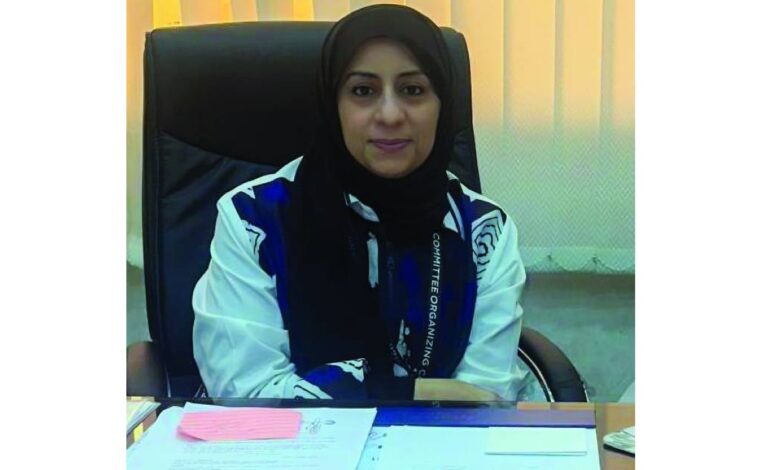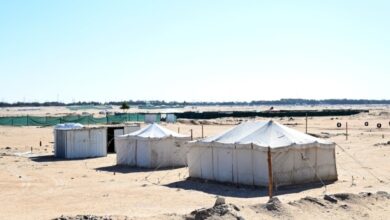Emergency departments in Kuwait handle up to 1,000 visits daily
Fatima Al-Kandari, the head of the Emergency Departments Council at the Ministry of Health, said cases are classified by severity, with critical cases examined immediately and stable cases waiting 50% less than the global average.

-
The Emergency Departments Council employs the Canadian Triage and Acuity Scale (CTAS) to prioritize patients into five categories. Immediate cases, such as cardiac arrest, receive urgent attention, while critical cases follow.
-
The number of seats in the Kuwaiti Board of Emergency Medicine program has been increased to ten new seats annually to enhance reliance on national professionals.
-
Ambulance crews are equipped to high standards and their capacity has been increased. There is also an automatic link between emergency departments and medical emergencies for crises and disasters.
-
Emergency departments now have 60-70 beds, up from 30, and saw 715,972 visitors in the first half of the year. About 80% operate with an integrated digital system.
Dr. Fatima Al-Kandari, Head of the Emergency Departments Council at the Ministry of Health, assured that emergency departments are consistently prepared and operational. She noted that some public emergency departments handle an average of 800 to 1,000 visits per day, according to Al Rai newspaper.
Dr. Al-Kandari, in an interview with Al-Rai newspaper, explained that emergency departments use a system to classify cases based on their severity. She noted that very serious and critical cases are examined immediately, while the waiting time for stable cases is 50 percent less than the global average.
She emphasized that emergency departments handle all types of cases but stressed the importance of raising awareness that these departments are meant for emergencies. Dr. Al-Kandari revealed that general emergency departments saw 715,972 visitors in the first six months of the current year.
She also mentioned that emergency medicine is a rare specialty and disclosed that the number of seats in the Kuwaiti Board of Emergency Medicine program has been increased to ten new seats annually to enhance reliance on national professionals.
She pointed out that emergency departments have expanded to enhance the medical services they provide. The average bed capacity in public hospital emergency departments now ranges between 60 and 70 beds, up from 30 beds previously.
Excerpts from the interview
-
What is the nature of emergency medicine?
Emergency medicine is a rare specialty in Kuwait, characterized by its unique approach, methods, and procedures. Emergency departments serve as the entry point to the ministry’s hospitals, operating 24/7, including during holidays and official vacations.
-
How does work proceed inside emergency departments?
Emergency departments handle all types of cases, regardless of cause or patient age, encompassing both citizens and residents. Globally, they are among the busiest medical departments, with patient numbers ranging from 200 to 300 per day, and up to 500 or 600 in some areas.
-
What is the local daily average number of visitors to emergency departments?
In Kuwait, the average daily visit rate to emergency departments ranges between 800 and 1,000. For instance, in January 2024, the total number of visitors to all public emergency departments was 122,000, rising to 152,000 last month.
-
Are there any statistics on the cases received during the first half of this year?
Emergency departments received 715,972 patients during the first six months of this year, averaging about 120,000 per month. Although we aim to reduce waiting times through triage, the severity of each case determines how long patients wait.
Sorting and classification
-
How are these large numbers of patients managed?
The Emergency Departments Council follows a triage and classification policy using the Canadian Triage and Acuity Scale (CTAS), which categorizes patients into five levels. The first category includes very serious cases that require immediate examination, such as cardiac arrest or severe car accidents. The second category covers critical cases, while the third category includes stable cases that still need examinations and x-rays for diagnosis and treatment.
The fourth category consists of very stable cases that need only a doctor’s examination, and the fifth category involves stable cases with non-emergency symptoms, often visiting for routine matters. Generally, patients in the fourth and fifth categories should go to primary care centers, but they are received in emergency departments based on the ministerial work policy.
Waiting rate
-
What does the waiting rate in emergency departments depend on?
The waiting period depends on case classification according to the policy approved by the Emergency Departments Council and international standards. First and second-degree triage cases, which are “very dangerous and critical,” are examined directly and immediately in the resuscitation area. Stable cases, transported by ambulance and requiring admission to observation rooms, are examined within half an hour, following protocol, with all vital signs checked to ensure stability upon arrival.
For cases in the fourth and fifth categories, waiting times in many developed countries can reach eight to 12 hours, but in Kuwait, the waiting period is 50 percent shorter than the global average. It is important to note that, even before this waiting period, all vital signs are recorded and the condition is confirmed to be stable.
-
How does coordination between emergency departments and medical emergencies work?
Medical emergencies serve as the link between emergency departments and the field. Ambulance crews are equipped to high standards and their capacity has been increased. Additionally, there is an automatic link between emergency departments and medical emergencies for crises and disasters.
Challenges and national cadres
-
What are the most prominent challenges facing emergency department doctors, and how can they be overcome?
In addition to managing the large number of patients through a triage and classification policy, one of the main challenges in emergency departments is communication skills. This challenge is heightened by the fact that the specialty is rare and includes staff from diverse medical backgrounds and nationalities, while also serving patients from various backgrounds. To address this, efforts have been made to enhance communication skills.
Additionally, about 80 percent of emergency departments operate using an integrated digital system, where all information and data are stored electronically. This includes electronic links between emergency departments, clinics, wards, and laboratory and radiology departments.
-
Is there a mechanism to increase national cadres in this specialty?
The scarcity of specialists is a challenge, but in cooperation with the Kuwait Institute for Medical Specialties, the Ministry of Health has increased the number of seats in the Kuwaiti Board Program for Emergency Medicine.
There are now ten new seats available annually. By October 2024, the total number of doctors enrolled in the Emergency Medicine Program at various training stages will be 53, aiming to enhance reliance on national personnel.
New expansions in emergency departments
-
How has the expansion of general emergency departments benefited the system?
When the departments were first established, they consisted of an internal medicine room and a surgery room. Today, the integrated departments include resuscitation rooms equipped with the latest medical equipment, observation and rapid examination rooms, isolation rooms, and a support procedures room. With the new expansions in emergency departments at the new hospitals, the average bed capacity has increased to between 60 and 70 beds per department, compared to 30 beds previously, effectively doubling the capacity.
-
Five skills for an emergency doctor
Regarding the skills required for an emergency physician, Dr. Al-Kandari stated that emergency medicine is a distinguished specialty. Essential skills for an emergency physician include:
- Speed in diagnosis and decision-making.
- Comprehensive knowledge of treatment basics and advancements.
- Effective time management and adherence to working hours.
- Ability to handle diverse cases.
- Proficiency in communicating with colleagues from various specialties to deliver the required medical service.
- Emergency units: Mini hospitals
Dr. Al-Kandari emphasized the ongoing efforts to enhance both current and future emergency department services, including:
- Providing the latest medical devices and equipment, along with expanding departmental infrastructure.
- Establishing specialized centers, such as the Kuwait Poison Control Center.
- Preparing clinical simulation laboratories for emergency cases in emergency departments, as well as trauma and fracture units.
- Creating individual emergency units that function as mini-hospitals, such as the Sabah Al-Ahmad City Emergency Center.
- Working on the development of the Mutlaa City Center, with expectations for its opening soon.
- Five types of accidents received by emergency departments
Dr. Al-Kandari explained that emergency departments handle all types of emergency cases, including:
- Cardiac arrest or heart attacks.
- Various accidents, such as car accidents, falls from heights, and more.
- All types of poisoning.
- Seasonal conditions, such as heat stress in the summer.
- Pneumonia and bronchitis in the winter.
-
High readiness for holidays and seasons
Regarding the readiness of emergency departments during holidays and seasonal changes, Dr. Al-Kandari confirmed that they maintain a high level of preparedness. During holidays and special occasions, the departments operate at full capacity. In the event of major emergencies, the Emergency Departments Council’s emergency plan is activated, and support teams are called in.
-
The difference between emergency departments and primary care centers
Dr. Al-Kandari emphasized that while emergency departments handle all cases, there needs to be better public awareness about their intended purpose. Emergencies should be reserved for critical situations, as opposed to minor issues such as a common cold or sore throat, which are better suited for primary care centers. These centers, many of which operate 24 hours a day, can handle such cases and help reduce the burden on emergency departments.












